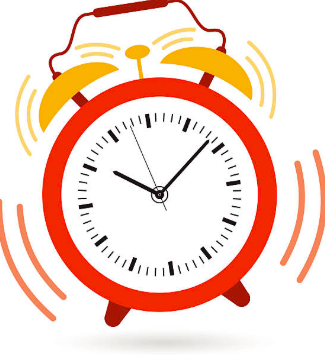
In this post, we are going to take you back to ABA 101. Why? Because getting these reinforcement and punishment terms sorted in our head is important to what we do.
For instance, take the term, ‘NEGATIVE REINFORCEMENT.’ What does this mean anyway? Does this mean taking something away to increase a behaviour or does it mean that you are eliminating a behaviour by taking something away? (hint: it is the former)
My husband uses this term wrong all the time and it drives me CRAZY!!!! Then, when he uses it often enough, I become confused. Is ‘negative reinforcement’ even a thing??
Here’s an easy chart to try to keep things straight:
| INCREASE future likelihood of behaviour | DECREASE future likelihood of behaviour | |
| Add things | Positive Reinforcement | Positive Punishment |
| Take things away | Negative Reinforcement | Negative Punishment |
However, let’s talk about real life examples (Psst, most parents don’t care about the terminology even if you think they should!).
Your alarm goes off in the morning and you press the snooze button. That ELIMINATION of noise is what INCREASES our likelihood of us pressing that button again in the future. Hence negative reinforcement.

Your dog has a toothache. He is barking like crazy. You give him some dog medicine (is that even a thing?!). It takes away his pain and he stops barking. Is this positive reinforcement or positive punishment? Trick question! It’s both; depending on whose perspective you take. You GIVING your dog medicine to ELIMINATE barking is positive punishment. Your dog will INCREASE barking behaviour in the future when he wants something to TAKE AWAY pain. Hence, negative reinforcement. Or is it positive reinforcement (because you are GIVING medicine)?!
Phew! See how tough this can be?
The question is, why is it so important to understand this inside and out, backwards and forwards?
Consider this: You work with a child who engages in mouthing behaviour while he is watching the ipad. He is getting really sick as he’s constantly putting things in his mouth. It is also affecting his ability to make friends because, quite frankly, spit is GROSS.
If you understand reinforcement and punishment, you can do any of the following treatments:
- Provide extra ipad time for keeping his hands down while he’s watching the ipad (positive reinforcement)
- Take away the ipad the moment he engages in mouthing behaviour (negative punishment)
- Yell at the child when he engages in mouthing behaviour (NOT RECOMMENDED) – Positive punishment – ONLY if the yelling serves to decrease behaviour
- Teach him to chew gum or some other chewy substance while watching the ipad (positive reinforcement of a replacement behaviour)



Pingback: 5 ABA Principles I Wish I Knew When I Was a Teacher - How to ABA